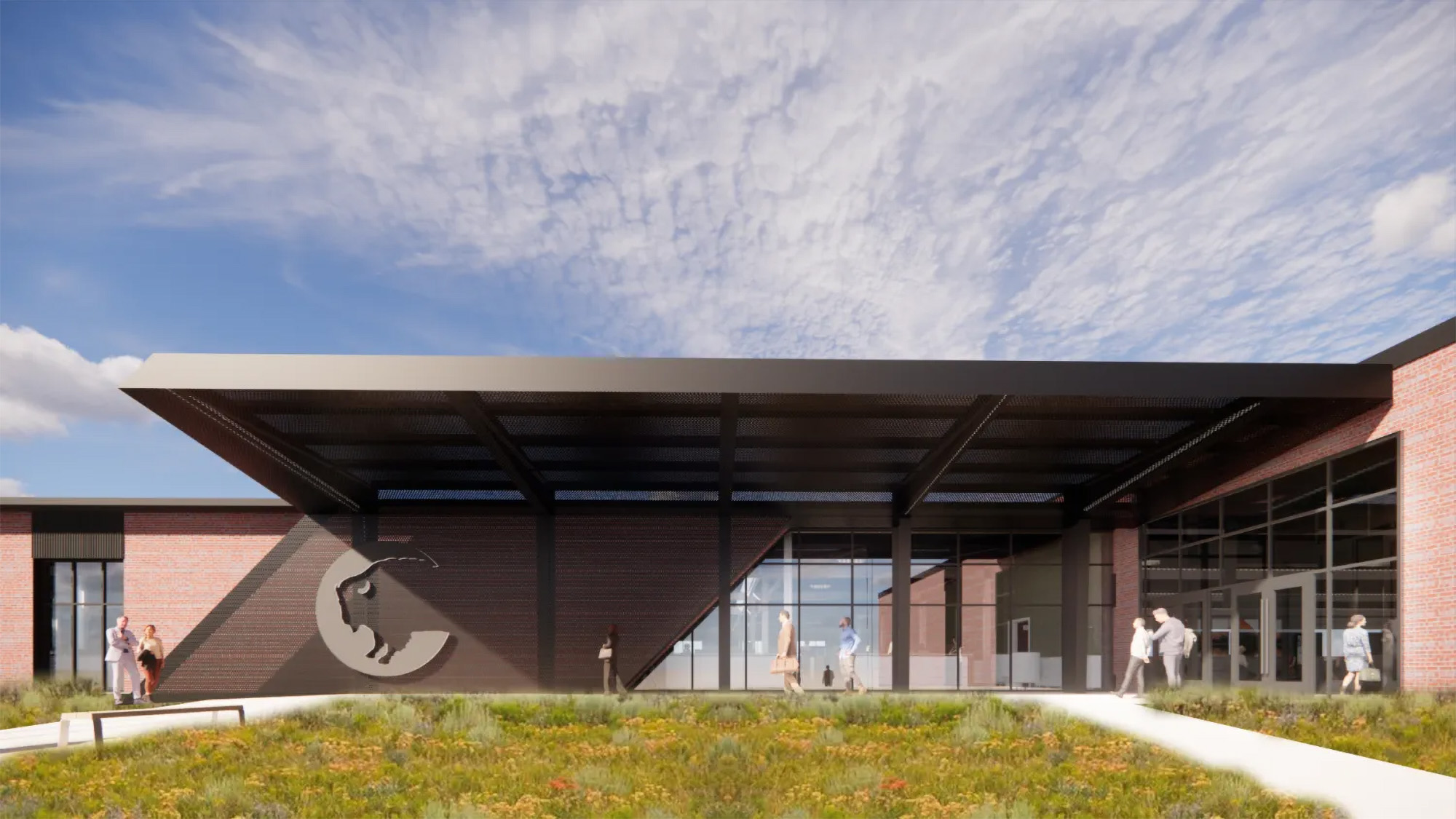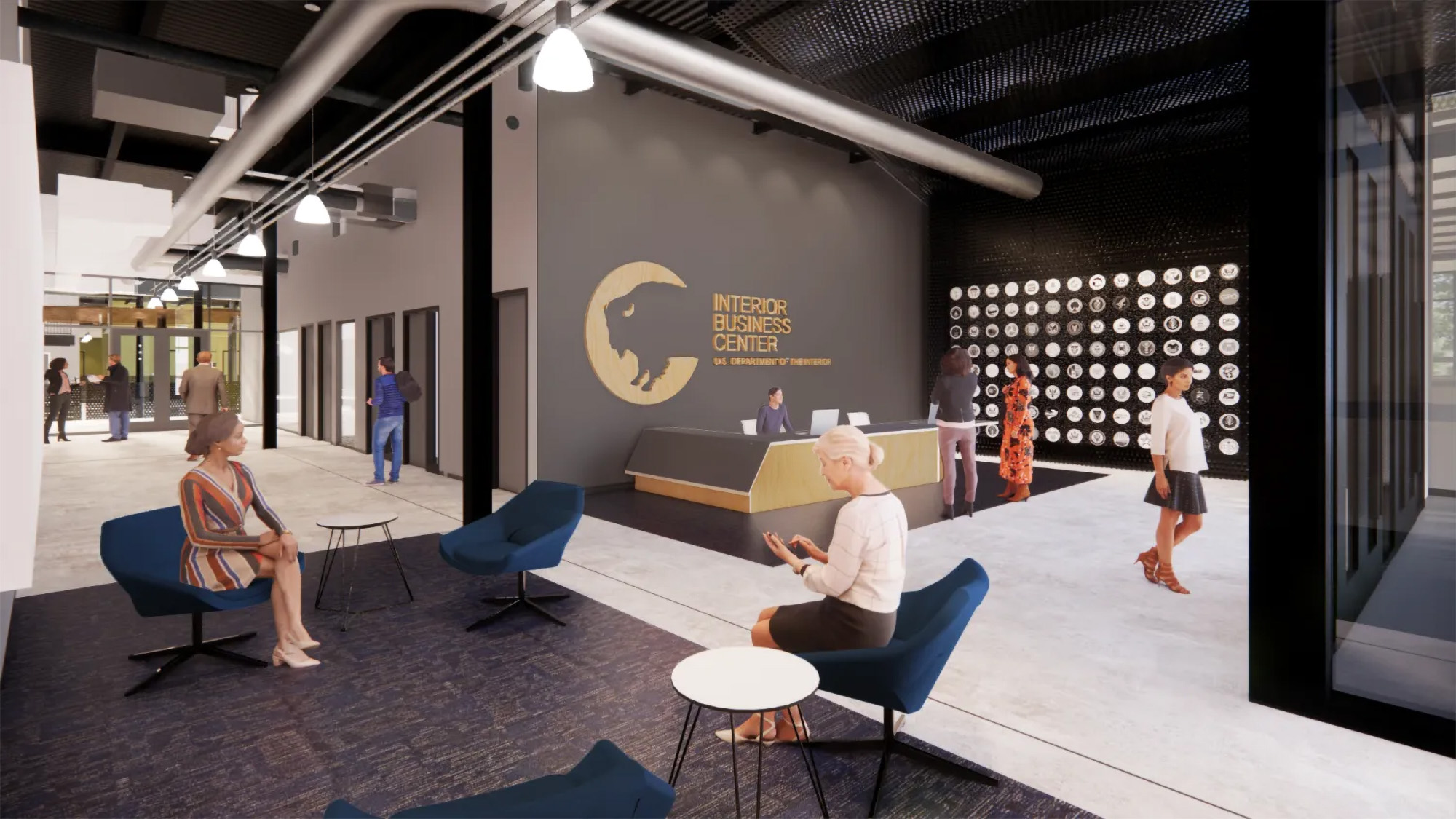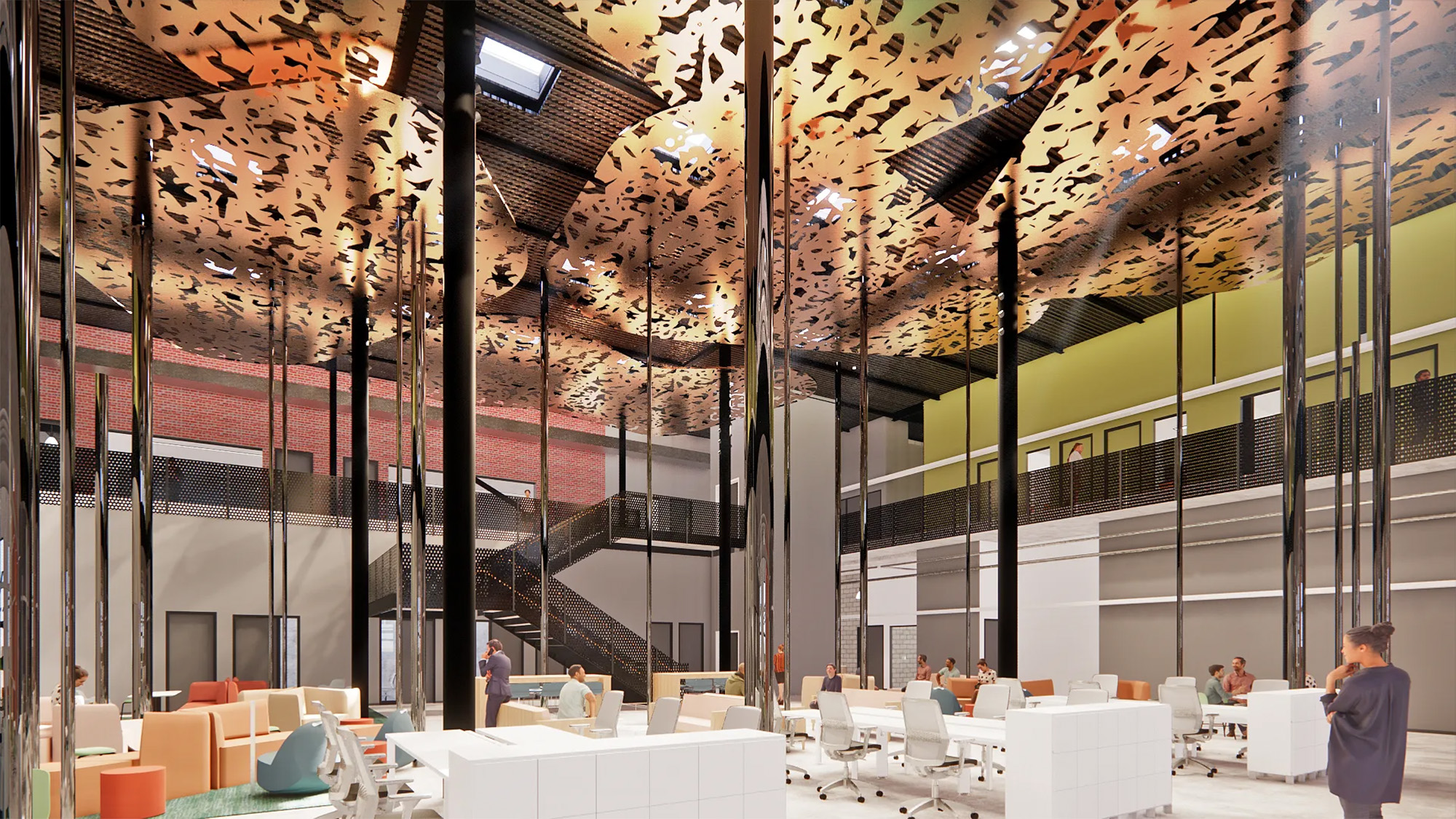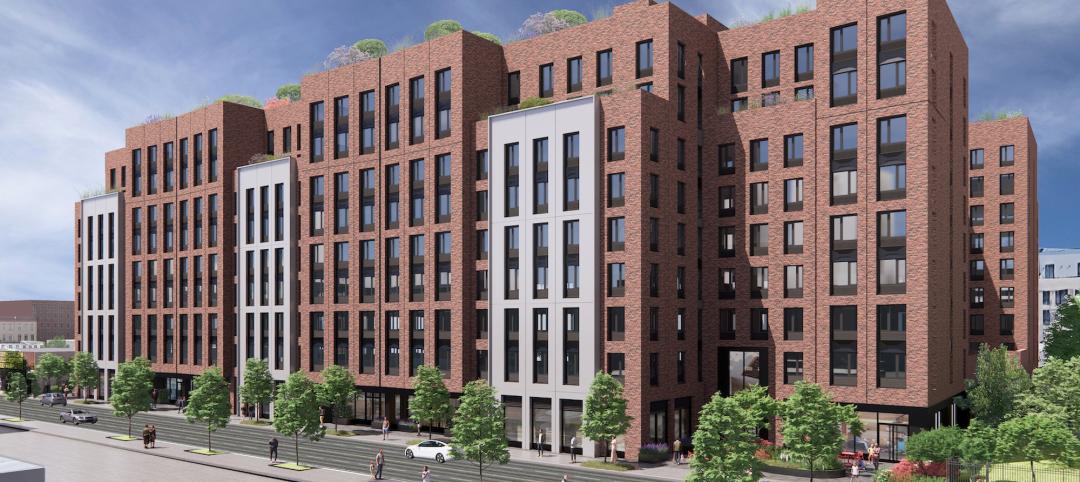Previously a World War II Munitions Plant and most recently an aging National Archives and Records Administration warehouse sitting vacant on the Denver Federal Center, Building 48 is now reimagined as a leading-edge workplace for the Department of the Interior.
While repurposing the building itself is a feat, the design is much more aspirational as it seeks to be LEED Gold, SITES Silver and both net zero energy and net zero carbon. Once open, the building will be operated by 100% renewable energy and serve as a zero emissions structure.
Moreover, Building 48 seeks to achieve all these goals with standard systems essentially available to everyone. “This project is proof that standard systems strategically designed for optimal outcomes can lead to remarkable results,” adds Matt Bartels, CannonDesign’s Principal in Charge and Project Manager for the project.
The General Services Administration reaches new sustainable design heights with Building 48

Numerous sustainable design strategies make this stunning adaptive reuse possible, including:
- Energy: The building will be a net-zero energy building that utilizes a 200KW roof-mounted solar array to charge an all-electric facility, cost-effective LED lighting along with high-efficiency heating and cooling systems (including electric boilers and air handlers) all designed to LEED Gold.
- Operational carbon: Building 48 will also be net zero carbon. Its building operations will not generate carbon as it is a 100% electric building. There is no natural gas service to the building.
- Embodied carbon: Reuse of the existing building structure and masonry skin saves enough carbon to drive an average car 43 million miles or power 3,300 homes for a single year.
- Daylighting: Bringing daylighting to the building is a key tenet of the sustainable design. The project added 73 new windows that are 8’ x 10' in dimension. The design team also added 85 stunning skylights throughout the building.
- Building site: Designed to SITES Silver certification, the landscape will feature adaptable trees, a pollinator garden and bioswales for water conservation to further connect employees to nature.
- Adaptive reuse: This project reactivates a vacant, federally owned structure with historical significance into a modern workplace that now contributes to the Federal Buildings Fund.
- Sustainable transit: There are 20 electric vehicle charging stations at Building 48, the largest concentration of EV stations on the DFC. The project has also installed the infrastructure to expand to 60 EV charging stations in the future.
Beyond its breakthrough sustainable design, Building 48 also features numerous other interesting stories that help shape the project. We’ve broken those down below.
Strategic workplace design
Sitting vacant, Building 48 had truly become an architectural “Frankenstein” of five buildings, building materials and design methodologies all cobbled together over a period of 30 years. Our collaborative team assessed all these unique approaches and set a vision for a unified solution that creates a dynamic community of interconnected neighborhoods along a boomerang building spine that’s enlivened by a forest of dappled light.

Supporting the Department of the Interior’s Interior Business Center (IBC), the building unites hundreds of employees who provide acquisition, financial management, and human resource services to federal organizations.
A dynamic workplace strategy ensures these employees and their teams are supported by diverse spaces including conference rooms, touchdown spaces, collaboration zones, community lounges and more. A large open-seating atrium called “The Forest” is the main collaboration hub featuring a dynamic central stair, courtyard access, extensive daylighting and other key amenities.

Honoring its beautiful home state
Each of Building 48’s neighborhoods draw inspiration from the scenic wonders of Colorado. Wall colors, graphic treatments and other visual cues help celebrate iconic places like Mesa Verde, the Black Canyon of Gunnison, Red Rocks and Rocky Mountain National Park among others. Throughout the revitalized building, biophilic elements and connectivity to nature is wonderfully juxtaposed with the building’s exposed ceilings, duct work and concrete.
Design Build
Also important to note, GSA Building 48 is being delivered via a collaborative design-build approach uniting our team with Centerre Construction. The design-build methodology accelerates decision-making, collaboration opportunities, project timelines and overall project outcomes. It’s a proven approach growing in popularity across regions of the United States and we’re excited to see the GSA leverage it with this project.

More from Author
CannonDesign | Sep 20, 2024
The growing moral responsibility of designing for shade
Elliot Glassman, AIA, NCARB, LEED AP BD+C, CPHD, Building Performance Leader, CannonDesign, makes the argument for architects to consider better shade solutions through these four strategies.
CannonDesign | Jan 3, 2024
Designing better built environments for a neurodiverse world
For most of human history, design has mostly considered “typical users” who are fully able-bodied without clinical or emotional disabilities. The problem with this approach is that it offers a limited perspective on how space can positively or negatively influence someone based on their physical, mental, and sensory abilities.
CannonDesign | Aug 22, 2023
How boldly uniting divergent disciplines boosts students’ career viability
CannonDesign's Charles Smith and Patricia Bou argue that spaces designed for interdisciplinary learning will help fuel a strong, resilient generation of students in an ever-changing economy.
CannonDesign | Jul 10, 2023
The latest pediatric design solutions for our tiniest patients
Pediatric design leaders Julia Jude and Kristie Alexander share several of CannonDesign's latest pediatric projects.
CannonDesign | May 11, 2023
Let's build toward a circular economy
Eric Corey Freed, Director of Sustainability, CannonDesign, discusses the values of well-designed, regenerative buildings.
CannonDesign | Apr 10, 2023
4 ways designers can help chief heat officers reduce climate change risks
Eric Corey Freed, Director of Sustainability, CannonDesign, shares how established designers and recently-emerged chief heat officers (CHO) can collaborate on solutions for alleviating climate change risks.
CannonDesign | Mar 9, 2023
5 laboratory design choices that accelerate scientific discovery
Stephen Blair, director of CannonDesign's Science & Technology Practice, identifies five important design strategies to make the most out of our research laboratories.
CannonDesign | Feb 9, 2023
3 ways building design can elevate bold thinking and entrepreneurial cultures
Mehrdad Yazdani of CannonDesign shares how the visionary design of a University of Utah building can be applied to other building types.
CannonDesign | Jan 9, 2023
How modular solutions can help address skyrocketing construction costs
Modular builder Joshua Mensinger details three ways modular solutions aid in lowering construction costs.
CannonDesign | Dec 9, 2022
What's old is new: Why you should consider adaptive reuse
While new construction allows for incredible levels of customization, there’s no denying that new buildings can have adverse impacts on the climate, budgets, schedules and even the cultural and historic fabrics of communities.
















